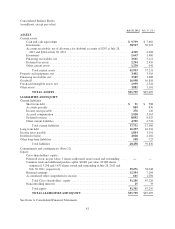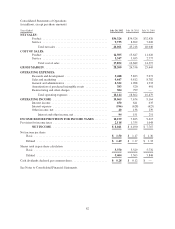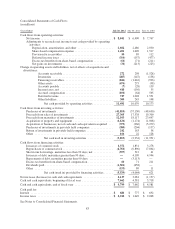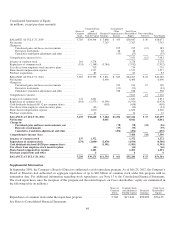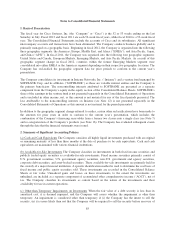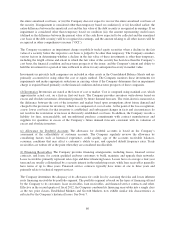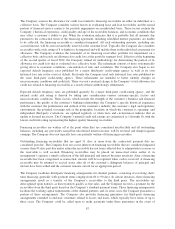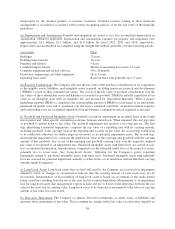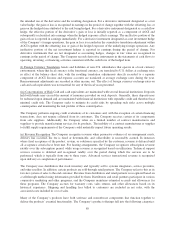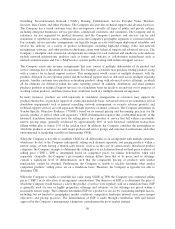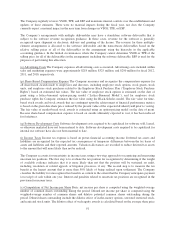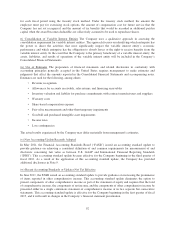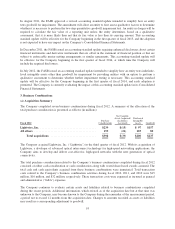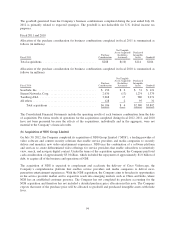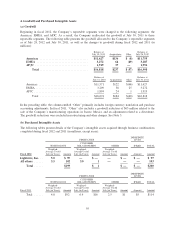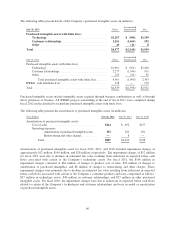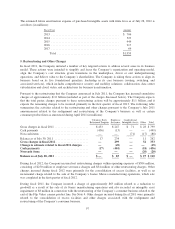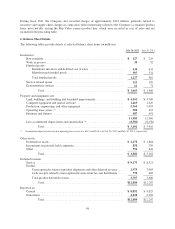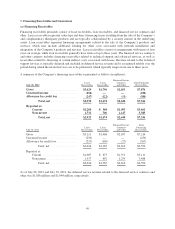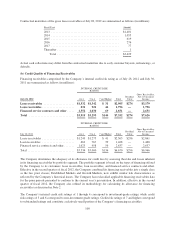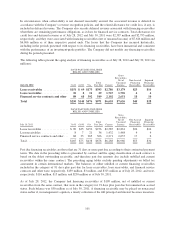Cisco 2012 Annual Report Download - page 99
Download and view the complete annual report
Please find page 99 of the 2012 Cisco annual report below. You can navigate through the pages in the report by either clicking on the pages listed below, or by using the keyword search tool below to find specific information within the annual report.
The Company regularly reviews VSOE, TPE, and ESP and maintains internal controls over the establishment and
updates of these estimates. There were no material impacts during the fiscal year, nor does the Company
currently expect a material impact in the near term from changes in VSOE, TPE, or ESP.
The Company’s arrangements with multiple deliverables may have a standalone software deliverable that is
subject to the software revenue recognition guidance. In these cases, revenue for the software is generally
recognized upon shipment or electronic delivery and granting of the license. The revenue for these multiple-
element arrangements is allocated to the software deliverable and the nonsoftware deliverables based on the
relative selling prices of all of the deliverables in the arrangement using the hierarchy in the applicable
accounting guidance. In the limited circumstances where the Company cannot determine VSOE or TPE of the
selling price for all of the deliverables in the arrangement, including the software deliverable, ESP is used for the
purposes of performing this allocation.
(o) Advertising Costs The Company expenses all advertising costs as incurred. Advertising costs included within
sales and marketing expenses were approximately $218 million, $325 million, and $290 million for fiscal 2012,
2011, and 2010, respectively.
(p) Share-Based Compensation Expense The Company measures and recognizes the compensation expense for
all share-based awards made to employees and directors, including employee stock options, stock grants, stock
units, and employee stock purchases related to the Employee Stock Purchase Plan (“Employee Stock Purchase
Rights”) based on estimated fair values. The fair value of employee stock options is estimated on the date of
grant using a lattice-binomial option-pricing model (“Lattice-Binomial Model”), and for employee stock
purchase rights the Company estimates the fair value using the Black-Scholes model. The fair value for time-
based stock awards and stock awards that are contingent upon the achievement of financial performance metrics
is based on the grant date share price reduced by the present value of the expected dividend yield prior to vesting.
The fair value of market-based stock awards is estimated using an option-pricing model on the date of grant.
Because share-based compensation expense is based on awards ultimately expected to vest, it has been reduced
for forfeitures.
(q) Software Development Costs Software development costs required to be capitalized for software sold, leased,
or otherwise marketed have not been material to date. Software development costs required to be capitalized for
internal use software have also not been material to date.
(r) Income Taxes Income tax expense is based on pretax financial accounting income. Deferred tax assets and
liabilities are recognized for the expected tax consequences of temporary differences between the tax bases of
assets and liabilities and their reported amounts. Valuation allowances are recorded to reduce deferred tax assets
to the amount that will more likely than not be realized.
The Company accounts for uncertainty in income taxes using a two-step approach to recognizing and measuring
uncertain tax positions. The first step is to evaluate the tax position for recognition by determining if the weight
of available evidence indicates that it is more likely than not that the position will be sustained on audit,
including resolution of related appeals or litigation processes, if any. The second step is to measure the tax
benefit as the largest amount that is more than 50% likely of being realized upon settlement. The Company
classifies the liability for unrecognized tax benefits as current to the extent that the Company anticipates payment
(or receipt) of cash within one year. Interest and penalties related to uncertain tax positions are recognized in the
provision for income taxes.
(s) Computation of Net Income per Share Basic net income per share is computed using the weighted-average
number of common shares outstanding during the period. Diluted net income per share is computed using the
weighted-average number of common shares and dilutive potential common shares outstanding during the
period. Diluted shares outstanding include the dilutive effect of in-the-money options, unvested restricted stock,
and restricted stock units. The dilutive effect of such equity awards is calculated based on the average share price
91


